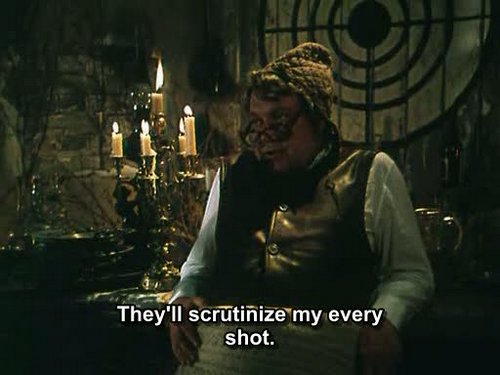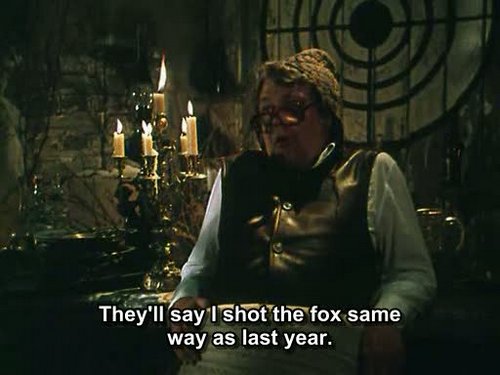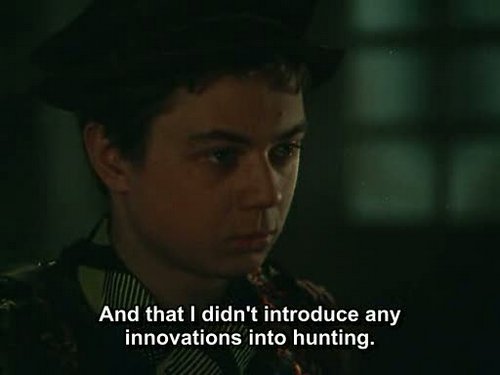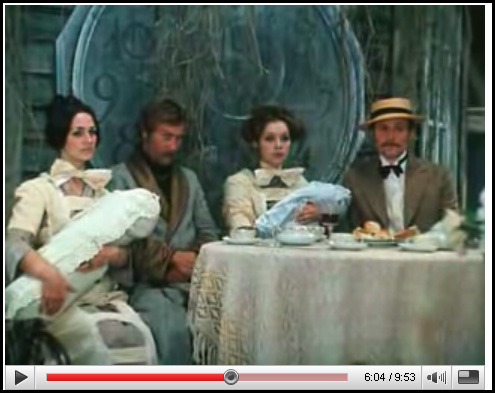Myra and I are still watching Idiot. One more session to go. But I need something to watch while running on the elliptical machine, so for that I’ve been re-watching Obyknovennoye Chudo. With the music and all the weird scene changes it’s a good one to accompany physical activity.
Speaking of strange twists, this is one I missed before. It’s a scene to make you go, “Huh? Where did that come from?” It takes place at the remote hunting lodge in the mountains. It’s a scene that has nothing to do with anything that has gone before, as far as I can tell. The hunter is comparing his craft to literary or artistic work, complete with the critics he has to endure.
On the other hand, maybe it does have something to do with what has gone before. The volshebnik (writer/magician) who is creating the story that is unfolding wants to do something interesting with his talents. But his creative efforts are for the sake of his wife, not for the sake of innovation or creativity.
As one who has long thought that teaching creativity is a good way to kill creativity, it could be that I agree with Mark Zakharov on the subject. (It’s risky to be absolutely certain about it, given my unfamiliarity with the language. I probably miss a lot of subtle points that would help me understand better.)



